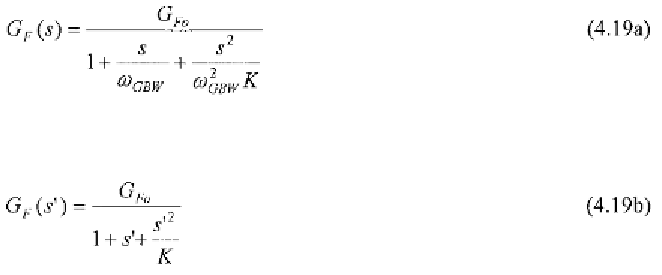Environmental Engineering Reference
In-Depth Information
indicating that in a two-pole amplifier
K
is almost equal to the trigonometric
tangent of the phase margin. In other words, for a target phase margin, we
obtain through (4.16) the value of the separation factor required during the
compensation design step.
From the above it derives that to design and analyse feedback amplifiers
it is more convenient to represent the closed-loop transfer
function,
as
product, and the separation factor,
K
[PP982]. Indeed, the conventional parameters, and (or parameter
Q
)
traditionally used in feedback systems, have been found very useful in
designing and analysing filters, but are less effective in the context of
feedback amplifiers. This because,
a function of the gain-bandwidth
and
K,
which are parameters
of the loop gain, and are parameters related to the closed-loop amplifier.
But designer effort is mainly (if not exclusively) focused on properly setting
the open-loop amplifier parameters in order to achieve the closed-loop
specifications. In addition, the new representation provides a simple vehicle
for characterising feedback systems. Indeed, the pole frequency and the
damping factor can be expressed as
unlike
Upon inserting (4.17) and (4.18) into (4.6), the closed-loop transfer
function becomes
or equivalently









